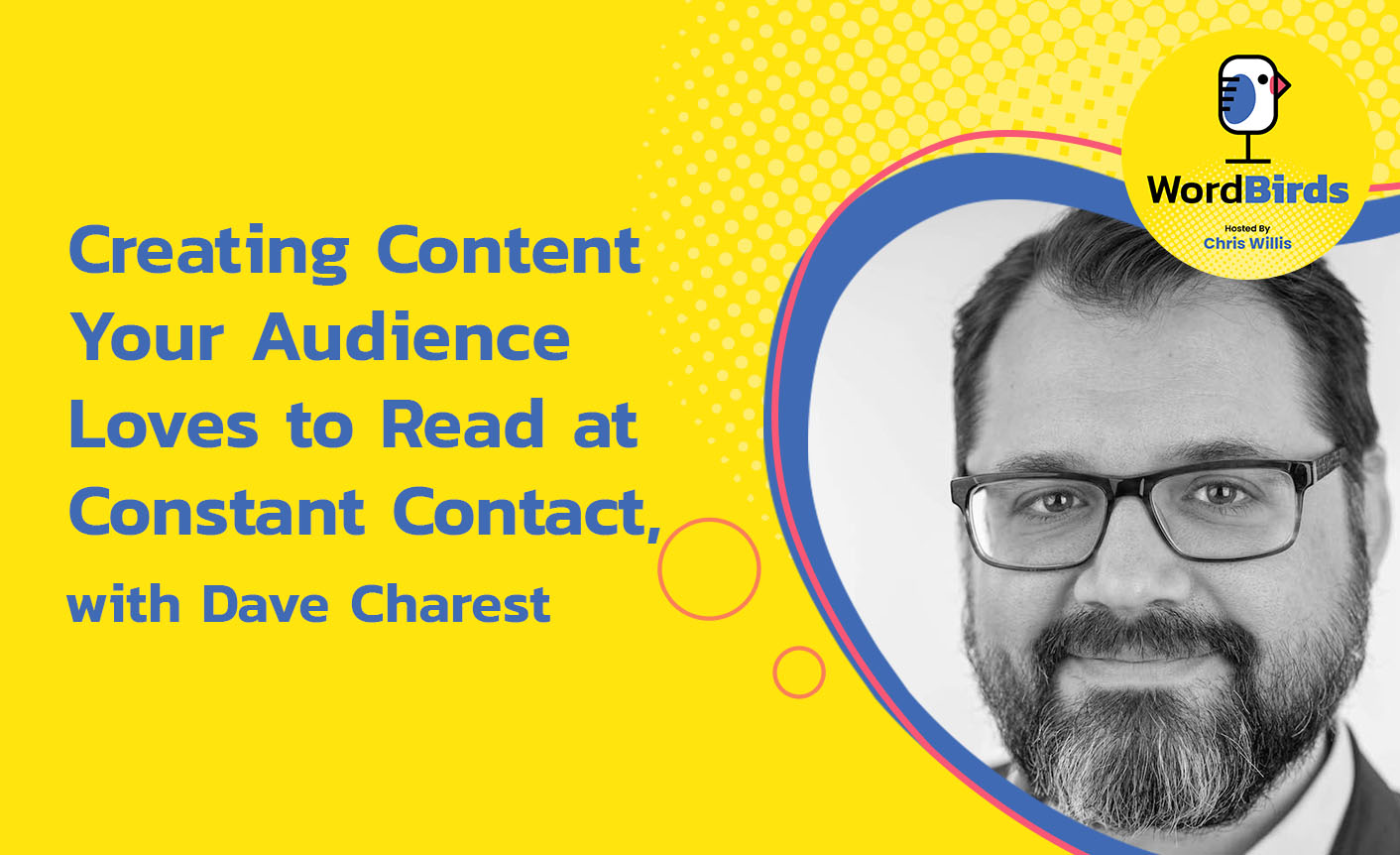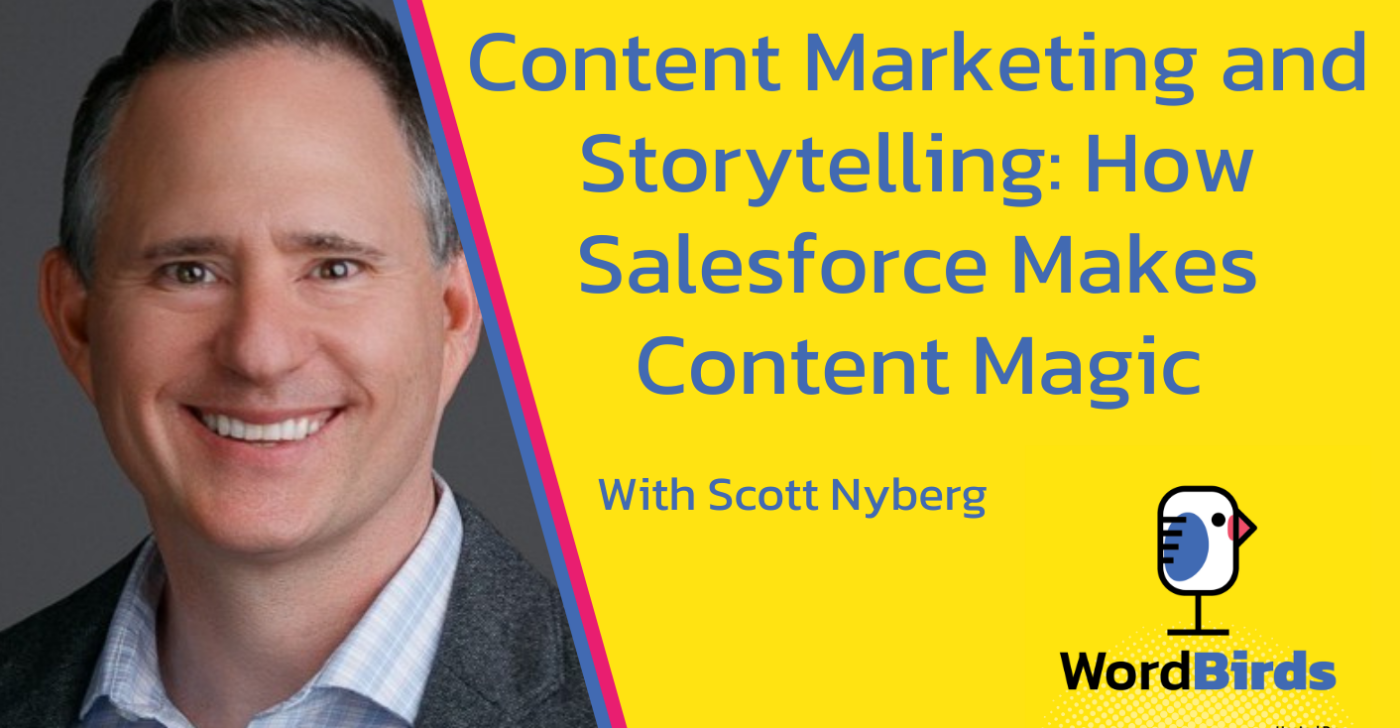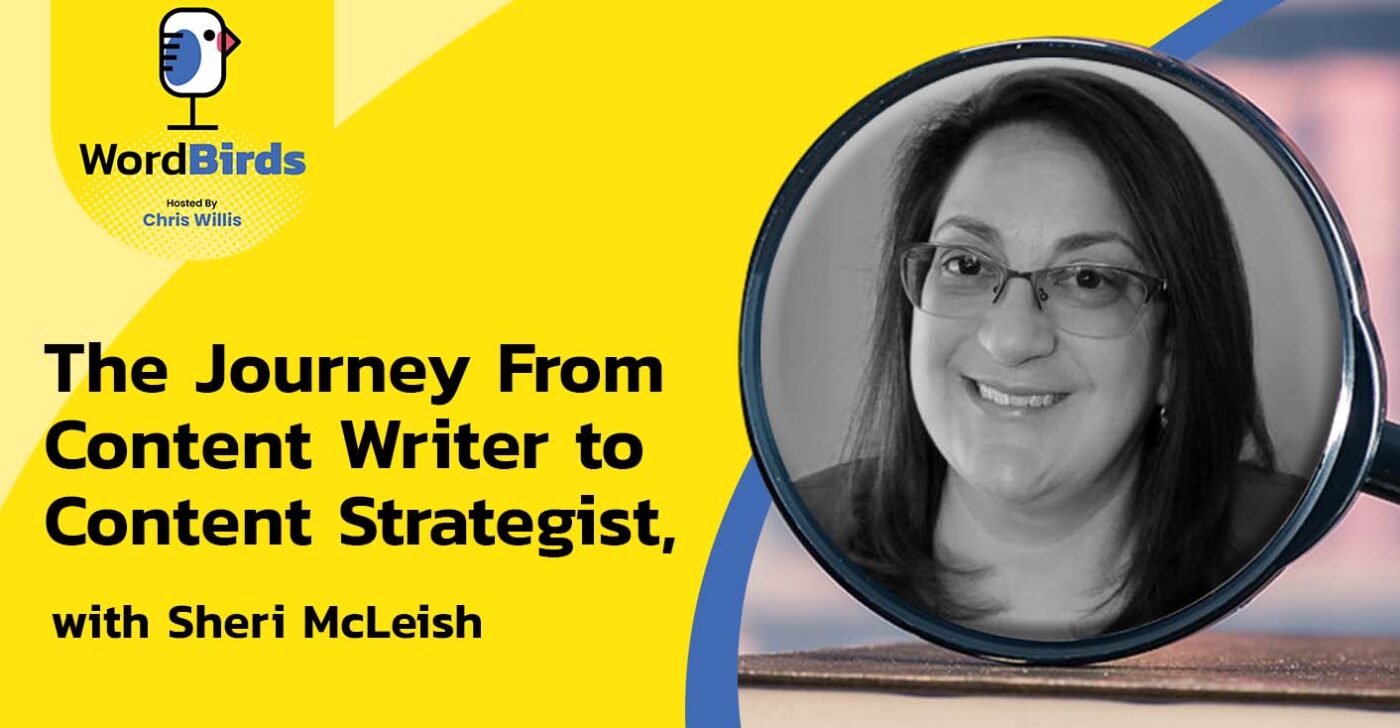Sure, your company is creating content but is your content valuable and attractive to your audience? Is it leading and influencing them towards action? How are you differentiating content marketing in your strategy to work with and optimize other marketing programs?
Dave Charest, Director of Small Business Success at Constant Contact, is joining us today to answer these crucial questions. He shares actionable advice and insights to guide your business in its content creation strategy.
Dave especially highlights the importance of understanding your audience and learning how to focus on a specific target and generalizing what works. There’s much to learn in this episode so tune in to get valuable tips that will help boost your business.
Watch the Episode here
Listen to the podcast here
Read full episode transcript
In this episode, we have Dave Charest. Dave is the Director of Small Business Success at Constant Contact. We are going to talk about eliminating subjectivity in the content creation process. We are going to look at the line between content marketing and marketing in general. Is there a line? We are going to find out. Sit back, and let’s get some insight from the flock.
Dave, welcome to the show. I’m excited to have you here.
Chris, thanks so much. I appreciate the opportunity to be here with you.
I’m excited to talk to you because, coming from Constant Contact, you are going to have some interesting views of the content business, especially how it affects your clients’ small business customers.
You said in your pre-interview that you believe that it’s about pushing teams to create great content that drives the business. I want to break that down because there are a number of things in that simple sentence. First thing, what do you mean when you say great content?
It’s interesting because great content is very subjective or can be. For me, what that means is content that resonates with the audience you are trying to reach. I say that it can be subjective because oftentimes, we tend to look at things and say, “I don’t like that.” That’s cool. You can have that opinion but sometimes, that is something that works well for the audience that that person is trying to reach.
Oftentimes people ask me for feedback on something, and I’m like, “Let me understand what we are trying to do here first, then I can give you an idea of what I think of it because if you don’t understand that, my opinion could be completely wrong because I’m not the target audience for it.” When I say great content, it comes from that idea of knowing who it is you are talking to, who it is that you are trying to reach, and how you can create content that helps them become successful.
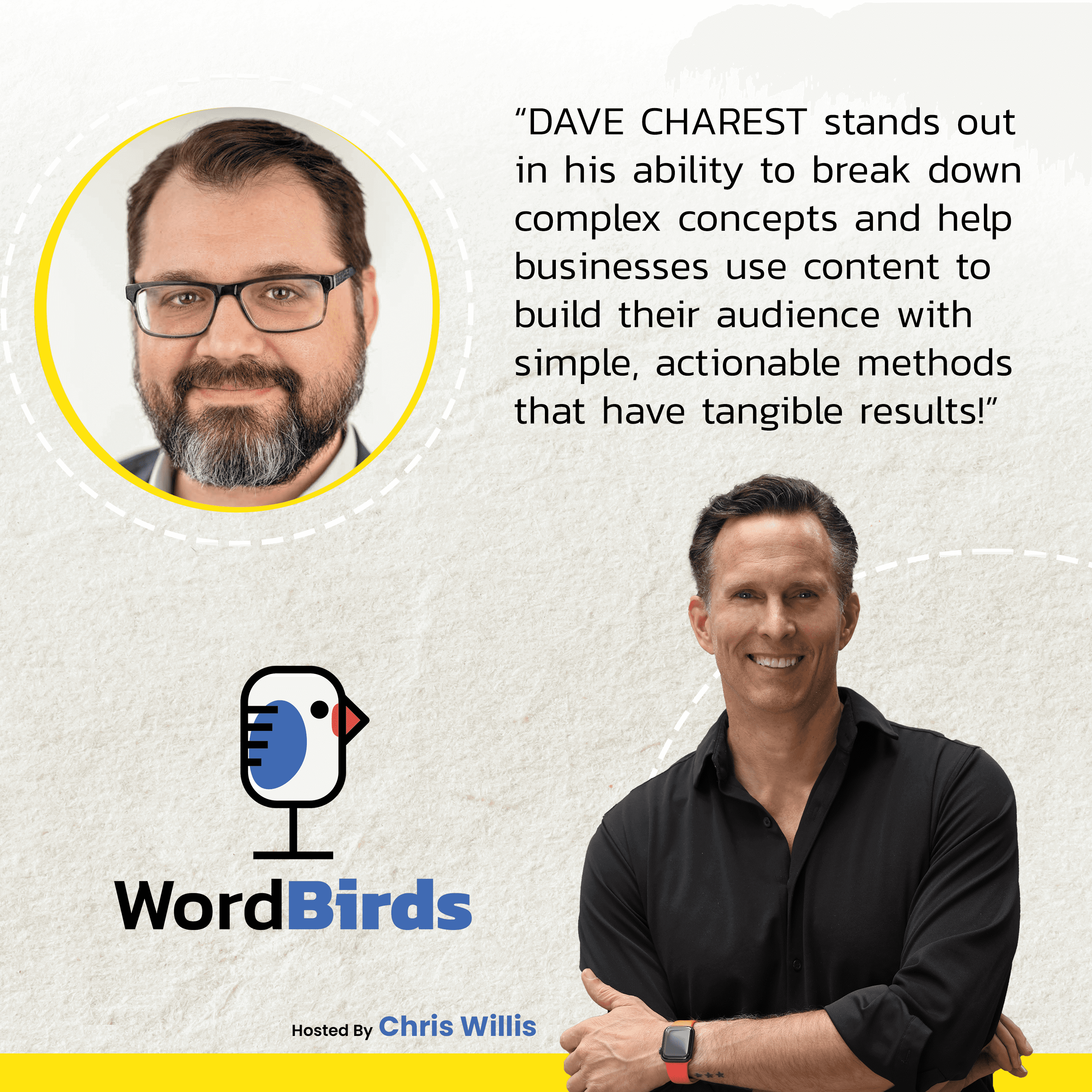
If you can do that, you are going to reach the right people and start to pull them into your universe, which is ultimately what you want to do with that content. For me, the great content piece means that. Does it match the pain points and things that you can help that audience with specifically? You’ve got to let that audience provide you feedback so you know where to make adjustments and how you are doing because they are ultimately the judge on whether it’s working or not. That’s what I mean there.
That’s where I want to go. You’ve created great content. How do you know it’s working? How do you see it driving the business?
It’s a couple of things. You need to think about this. One, you need to be in lockstep with like, “What are the goals? What are we trying to do? What are we trying to accomplish?” I always look at content as, first and foremost, the first goal of it is to build that audience. How do you get those people you are trying to reach into your universe? Along the way, we try to create these feedback loops. One of the things to think about is, “Are you talking to people in that audience.” That’s often the most underutilized tactic.
Oftentimes, the worst thing that has to happen is a bunch of marketers in the room trying to figure out the problems and what’s going to resonate and work with your particular audience without talking to them. I can share a story here. Early in my career at Constant Contact, we had a customer with whom we hit it off. During our pre-conversation here, you mentioned the owner of the Concord Cheese Shop. It’s a great place to go out there. It’s amazing. We became close friends. He was a Constant Contact customer. We were doing our own podcast at the time when I first met him. He was an interesting character.
He’s a great in-person marketer and was all dead set against social media. Even though he was using emails like, “I don’t see the value in it,” and that type of thing, it was interesting. I was like, “You are doing a lot of great things but we need to help you see the value in these tools that you are paying for and using.” We invited him and his team to come to spend a half day with us and put together this workshop. It was funny.
I mentioned the setup of these feedback loops. I sent an agenda over to him and was like, “Here’s what I think we can cover. We will do this and this.” I am proud of myself. He wrote back, “Here’s what I want to talk about. It was this and this.” You have to take some humble pie and be like, “Let’s go with what you are going with,” because you often have to start there to get people to where you want to go. I recognized that although they weren’t exactly the same words, we were getting to the places and hitting some of the things that I also wanted to talk about.
I had to let him drive what that was because, ultimately, that’s what’s going to get his attention and get him on board with what we are doing. From there, having that one interaction, I remember when we did that, we ended up coming up with this, listening to the pain points and the things he wanted. We ended up creating this whole series of webinars and content around this idea of the fifteen-minute email marketing plan. We broke everything up into fifteen-minute tasks so you can pick up if you have to find yourself with us. We reach small business owners, so wearing many hats. They don’t always have a lot of time.
If you find yourself with fifteen minutes, how can you jump into your marketing stuff and know, “I’ve got fifteen minutes, I can get this task done, and it’s going to move me closer to what I’m trying to do?” If you tell a small business owner to, “Do this marketing thing where you don’t know what’s happening or do this other thing,” if it’s taking out the trash, they are going to do that. We did that, and then we generalized that. We helped one person. We focused on him and gave his team a whole plan to work on and do things. They got great value out of that.
We then turned that into a series to reach other small business owners that were going through the same series. At the time, that was one of our most registered and attended webinar series. Back then, we were hitting probably a few thousand people. If we go back to starting there to the beginning of 2022, we did a webinar series that had over 10,000 people registered for it. Often the goal is how we start with the audience, a single person, if not many but at least one, on how we get specific with that person and then generalize, so other people can use those structures to apply to their business. That’s how we get there.
It's always about how we provide the information in a practical, jargon-free, step-by-step way so they get something from it that they can actually use. Click To TweetIn our world, what we see is almost mirroring what you are saying. It’s identifying that one piece of content that resonates, what makes it resonate, and laying that as a plan or framework over everything else and the constant iteration that comes along with that. One of the challenges that folks have is they think they can set it and forget it, “I’m going to create a voice for my audience. This is my brand. This is the voice that goes with it. This is how we communicate now.” It doesn’t work that way. It’s an iterative process to get closer and closer to your audiences, and as the audience changes and evolves, you evolve with it. That’s where the best brands work.
That’s a great point. I’m thinking of the evolution of that. I remember that prior to the pandemic, I did a lot of speaking on behalf of Constant Contact. We were doing a presentation. We built a foundational piece of our content strategy around making sense of online marketing. When you think about who we are reaching, I like to say it’s a small business owner by trade and marketer by necessity. These are people that don’t necessarily want to do marketing but know they have to. It’s like, “Tell me what the hell I need to do. I don’t need to get into the weeds and geek out over marketing,” as you and I would. They don’t care.
It’s always about how we provide the information in a practical, jargon-free, step-by-step way, so they get something from it and take something they can use. We’ve moved away from that discussion because during the pandemic, if anything, it accelerated people’s use of these tools and in getting online because it was the only thing they could do. Now, it’s not so much about making sense of it at all at this moment as it was before. They get it now.
We can talk about more specific things like how you get better results out of those things that you are doing. It’s funny. The audience does evolve, and you have to be in tune with that. I like to create frames and foundations with content. For example, it’s about making sense of online marketing. That’s our frame. That’s the foundation. We are going to start everybody there and give them tips and things that they can use, and then we will start to go deeper into each of the subjects.
If we are talking about social media, email marketing, paid ads, and that type of thing, how can we give you the things, show you how they all work together, and then say, “Do you want to go deeper into the email? Let’s give you a plan for how you build that email strategy, then let’s build on top of that and talk about how you start using automation. Let’s then build on top of that and start talking about how you start using data, AI, and those types of things.”
It gives people a progression of wherever they are in the journey. They can find themselves, get what they need, and learn how to make progress from wherever they are. You can only do that if you set the foundation. One of the things that we’ve learned as a company is that you often say, “Let’s do beginner, intermediate, and advanced content.” You can’t do that without setting the frame of what is the beginner stuff.
Everybody has got a different connotation in their mind. You could ask me, “Would you consider yourself an advanced content marketer? In relation to what?” I always say, “No, because I still have so much to learn. In relation to somebody else, we can have this conversation about content where somebody else wouldn’t.” I can’t put myself on the right spectrum in terms of what that is. You have to set the frames so that like, “You are new here. You are just starting. Start here so you understand our point of view and the foundation that we are building things on, and then we can take you to that next level and the next level.”
I think about your audience and the complexity of your audience in general because we are not talking about selling to Citibank. There’s going to be somebody at Citibank responsible for running HubSpot, “This is my mom’s retail business,” and being able to communicate at that level to somebody who is not just resistant to marketing. I’m sure she would love to be a fantastic marketer but the technology, the approach, and the things that we take for granted in our day-to-day jobs like a clothing store, is not a technologist, not a system owner. She’s not marketing operations.
How do you create content for somebody that is starting from scratch? It’s not just teaching them to use your products. It’s teaching them to be a marketer, which has got to be a challenge from where you sit.
That’s one of the most enjoyable things about the work that I do. I get to talk to customers on a regular basis, so I get to hear their stories. I’m always amazed at someone who started their own business and realized, “I’m no good at running my own business,” which is why I ended up at Constant Contact. I was like, “I’m good at the marketing piece. How can I do this in teaching? How can I do this someplace where I don’t have to worry about keeping the business running?”
Being able to have those conversations with people that do that on a regular basis is always mind-blowing to me. It’s to be able to have those conversations where you say, “Have you thought about it like this? What if you tried that?” and see the light bulb go on and be like, “Okay.” We do that in practical terms without getting into all of the hullabaloos that we talk about like, “Create a persona and do a thing and this and that.”
I’m saying like, “Who’s your favorite customer? Write your email to him or her.” “I can do that,” and then you are in a different zone where you are overcoming those roadblocks that might get in the way by like, “I don’t understand what you are talking about,” kind of thing. The opportunity to be able to do that is always exciting. As I said, I have been doing this for several years with Constant Contact. Although we are talking about the same things, which is the interesting thing about marketing, over and over again, it’s always different, oddly enough.
Although we're talking about the same things over and over again, which is the interesting thing about marketing, it's always different. Click To TweetPlaying off that marketing versus content marketing, everything that you are talking about is the act of providing marketing guidance but the way that you are doing it is entirely content marketing. Where’s the line between what content marketing is nowadays and what marketing in general is? Is there one?
It’s a good question. It’s blurred. I asked this question on my LinkedIn channel. It boiled down to 50/50, where we ended up. There’s no conclusive evidence of which is what. Particularly nowadays, with just online marketing digital, I don’t think you can get away with doing anything without some form of content. When you think about content marketing, the difference is that you have marketing where you are trying to communicate with someone, and it’s not necessary. It could be an ad or one message that you put out. The content marketing piece is about creating things over time to build an audience and ultimately influence their behavior.
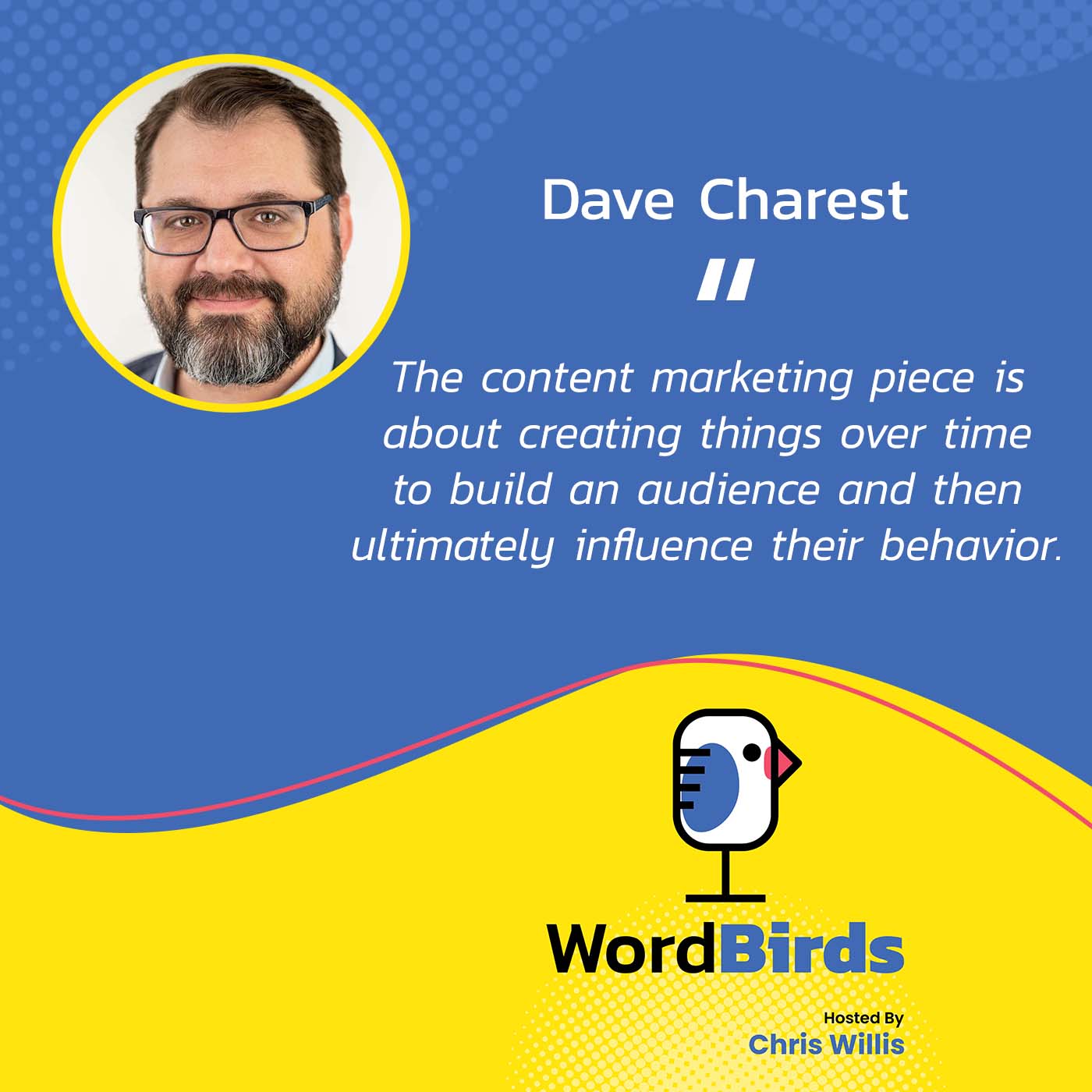
That’s the difference between the two, where it’s not a one-and-done. It’s like, “I’m going to do this consistently for a time. That is ultimately going to bring people into the universe who are the right fit for my business. Eventually, I am going to influence their behavior to take some type of action that helps benefit my business, whether that’s buying something, referring other people to us or helping us spread the word about something.” That’s the way you look at it and maybe the differences between the two. To me, I always feel like all marketing is content marketing now because you need some element of that.
Here’s a more focused question. Is content marketing part of demand gen? Should it be one department or one team?
It can be. I can only speak from my experience. When you think of Constant Contact, we are selling, at the end of the day, a $10 product. There’s a little bit of a difference. When you think of demand gen, not that we don’t have a sales team, marketing team, and all of that but you usually think of a bigger price product, where there’s something where there’s more time between somebody learning about you and purchasing. There’s a higher dollar amount there, so you must do more. Depending on the nature of your business where that sits, as we are learning into new muscles because we have new tools that we’ve added that reach a higher level of customer, we are finding that those things need to come together.
To answer your question, yes, it is, but it’s also determined by the nature of the business and what that sales process is like. How can that help? I look at my job a lot as helping grease the wheels. I often describe it as volleyball. How can I tell stories and give information and education that makes somebody say, “I want to do that?” How do I set the ball up so that when sales come along to talk to them, they are able to spike the ball down and ready to do that? It’s hard to give these general answers to those things because it is so dependent on the nature of your sales process, your sales cycle, looking at what that looks like, and where are the areas where content can come in and help with all of that.
Looking at my own organization, I have two VP-level leaders, one that is content and product, and the other that’s demand gen neither one of them would be very valuable to anybody without the other one. I don’t know if we were a much larger organization, that wouldn’t make sense eventually for those things to be one thing because we don’t generate a single lead that doesn’t come from some form of content. In days gone by, the domain expertise lives in the content marketing group, and the execution expertise lives in demand gen but there’s such a blur between that now. My demand gen leader knows everything about what we do too. It’s not different. They all work here.
The criticality of this, and as we look at the way that people make decisions, and decisions are based on a series of touch points and almost every single one of those touchpoints, is a piece of content in some way. It becomes incredibly focused and important that content marketing be central to the way that you build out the business, whether you think of yourself as a content marketing organization or not. I got news for you. Your webinar is a piece of content. All of that is content that’s driving your demand gen. The answer is that everybody is content marketing at this point.
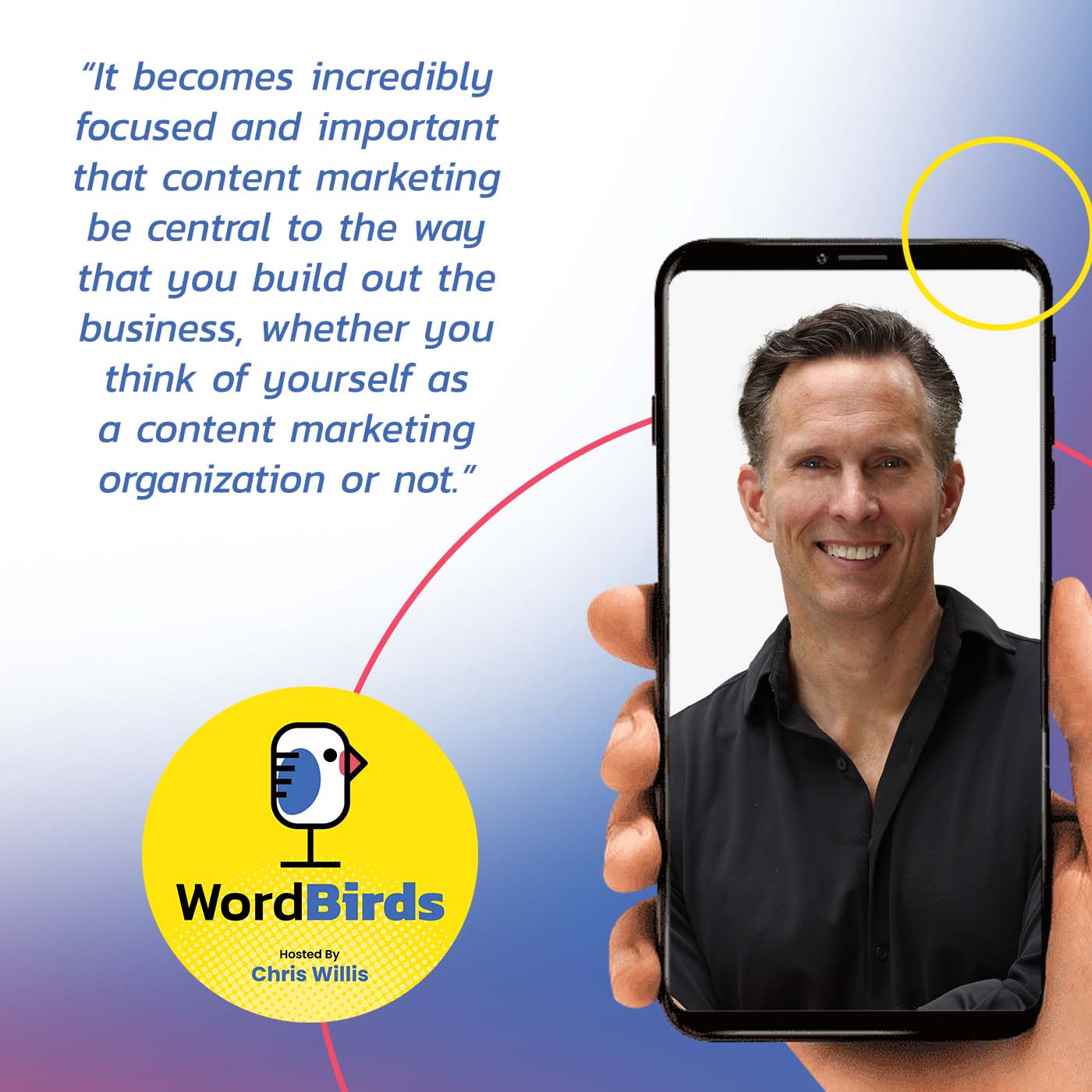
It feels that way. Like you are saying, I can’t imagine a world where you are not doing anything with some form of content to make that happen. The exciting thing that got me excited, even getting on this journey of being in content, is the idea that you can communicate directly with your customers. You don’t necessarily need that middleman. I often talk to people about this idea, where we often spend all this money and acquisition dollars on going to other sites and trying to get our stuff in front of those people.
I’m always like, “We need to make sure we have a way to steal that audience. How do we get those people into our stuff so that we are talking to them directly versus having to pay for them over there? Let’s get them onto our side.” It doesn’t have to be a direct sale right away over there. It should be how we pull them there to bring them closer to us so we can lead them down that path. It’s amazing that we have the opportunity to do that now, which is exciting.
It doesn't have to be a direct sale right away over there. It should be, how do we pull them there to bring them closer to us so then we can lead them down that path? Click To TweetHere’s the last thing I want to hit on. We didn’t talk about this prior to this. Looking at your past, there’s a jump that happened back in the 2010 timeframe when you went from apparently being an actor to being a full-time enterprise content person. I also have a Theater degree. I’m interested in how you made that jump.
That’s an interesting story. I was in New York at the time. I’m originally from Massachusetts. I had moved out to New York. I was out there for fifteen years or so before I moved back to work at Constant Contact. There came a time when I was working at a job that I was working the front desk when I was at school. I was going to school for Theater and doing those things. I ended up progressing up the ranks and became the practice manager of that place where I was the billing manager doing insurance claims. One day, it became like, “What the heck am I doing? This is not what I want to be doing.”
It got to the point where on Sundays, I was sick to my stomach. I do not feel good about going in. I was talking to my wife. This was in 2006 or so when I started to get into this online marketing thing. This was a time when not everybody was creating content, and not everybody was doing this thing. I was heavily involved in reading copyblogger, Brian Clark like those guys and learning about how all this stuff works. I was like, “I’m going to go out.” This was when I started my own thing. In that process, because I had close ties to the theater community, I started to pay attention to how people in those worlds were doing email marketing.
It was always like, “Come see my show.” It was never anything else. I was like, “We have this huge opportunity too to tell these cool stories, bring people in, and not just ask people to buy tickets but get them excited about the things that we are doing so that they are asking us, ‘When can we buy tickets?'” I called it back then with the journey factor. I laid out this plan for how people could use email to start getting more people to put in more butts and seats. As I was running my own business and doing that, I parlayed to a role as a Marketing Director for Story of Performing Arts Center, started to implement those things, get the actors involved, get the executive director involved, sharing why we are doing a thing, and engaging with the community.
It was a huge success for us in terms of driving people to register and buy tickets. That’s what led me down that path. When my wife and I were looking to move back to Massachusetts, who also comes from a theater background and teaches Public Speaking these days, it was that ability to convey things and tell stories that is one of the best assets I have. I taught myself how to do the marketing bit and how those things worked.
The skillset of being able to tell a story, hold people’s attention and engage with people all comes from the Theater and Marketing background. It’s served me pretty well in this now that I get to travel the country and speak to small business owners on a regular basis. That’s where that came from. I was always excited about marketing and being able to marry those two things together. It worked for me.
I like the stories about people making it out of the theater. It would be great if we had all been wildly successful after college doing what we chose to study. In general, it’s seeing people that made that jump into the business world. There are so many transferable skills that we learn in college. There’s a general assumption of, “You did theater, cool. You acted for a few years.” It was a hard degree. You talked about subjectivity. If your professor has a chip on his shoulder, how do you grade the performance of the black box theater play? “I didn’t like it.” “What do you mean?” “It feels like a C to me.” “Why? The audience was clapping. People liked it. People were happy.” “I don’t know. I don’t love that.”
In a lot of my career, the reason that I’m such a data-driven person is because of things like that. Nobody’s bonus should ever be based on, “Because I like you.” There need to be numbers behind it, and you build that into everything you do. One of the things that I took away from my experience was to avoid subjectivity at all costs. It’s better to have an objective measurement. Dave, thank you. This is great. This was fantastic and actionable for the folks that are reading. If people want to continue this conversation with you, how would they find you?
Please find me on LinkedIn. I would love to connect. If you have any small business owners or folks like that, feel free. I’m sharing tips regularly for those folks out there too. Send them my way. Let’s connect on LinkedIn. I would love to do that.
For those reading, Dave does post lots of conversation starters. Jump in and interact. All of this is more fun if people take part. Dave, thanks for being on the show. Everybody, thanks for reading. We will see you next episode.
Important Links
- Constant Contact
- LinkedIn – Dave Charest
- WordBirds – LinkedIn
- WordBirds – Home page
About Dave Charest

Dave Charest is the Director of Small Business Success at Constant Contact, the online marketing leader trusted by millions of small businesses. In his role, Dave acts as an educator and an advocate for small business leaders, marketing professionals, and nonprofits by providing them with practical marketing advice that can help them achieve their goals. He is a dynamic leader, speaker, creator, and award-winning marketer who strives to inspire small businesses by simplifying the complex world of online marketing.
